A Complete Guide to Solution Selling in 2023
Casey O'Connor
Contents
- What Is Solution Selling?
- Why Is Solution Selling Important?
- When is Solution Selling Used?
- Solution Selling vs. Consultative Selling
- Solution Selling vs. Product Selling
- Pros and Cons of Solution Selling
- Solution Selling Process: 6 Steps
- Solution Selling Tips
- How to Get Started Solution Selling
- Solution Selling Questions
- More Resources: Top Solution Selling Books
Solution selling is a sales methodology that has proven successful since the 1970s.
The approach teaches sales reps to recommend specific products or services that will make the prospect feel like their problems will disappear. Often this means that sellers are tailoring their offers to be bundles of different products and services for a truly custom solution.
In this article, we’ll go over everything you need to know about solution selling, including what it is, why it works, how to do it, and more.
Here’s what we’ll cover:
- What Is Solution Selling?
- Why Is Solution Selling Important?
- When Is Solution Selling Used?
- Solution Selling vs. Consultative Selling
- Solution Selling vs. Product Selling
- Pros and Cons of Solution Selling
- 6 Step Solution Selling Process
- Solution Selling Tips
- How to Get Started Solution Selling
- Solution Selling Questions
- More Resources: Top Solution Selling Books
What Is Solution Selling?
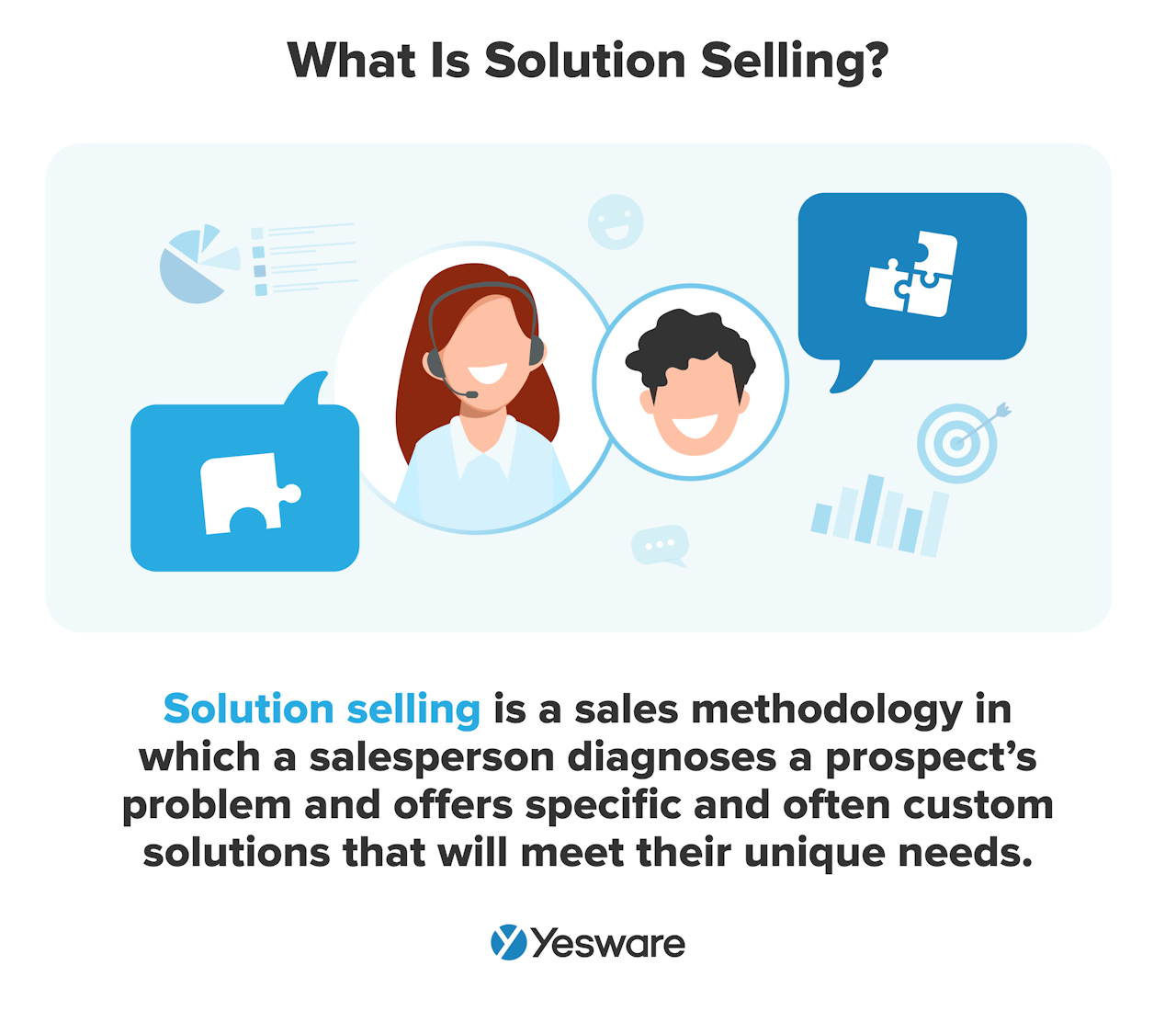 Solution selling is a sales methodology in which a salesperson diagnoses a prospect’s problem and offers specific and often custom solutions that will meet their unique needs.
Solution selling is a sales methodology in which a salesperson diagnoses a prospect’s problem and offers specific and often custom solutions that will meet their unique needs.
Right off the bat, it’s important to note that although the approach does require sales reps to offer buyers solutions, the premise of the methodology is much “bigger picture” than those solutions’ price, features, and specs.
The “solution” component of solution selling refers to meeting the customer’s underlying needs and solving large-scale business issues through customized bundles or packages of highly tailored or adaptable products and services. It aims to sell the entire outcome of solving the problem — not just the logistical or technical aspects of it.
The Origin of Solution Selling
The solution selling sales approach was developed in 1975 by Frank Watts, but made popular (and eventually trademarked) a bit later by Xerox employee Michael Bosworth.
Bosworth went on to write the first book on the topic in 1995, Solution Selling: Creating Buyers in Difficult Selling Markets. His book continues to be one of the most popular resources on the topic today.
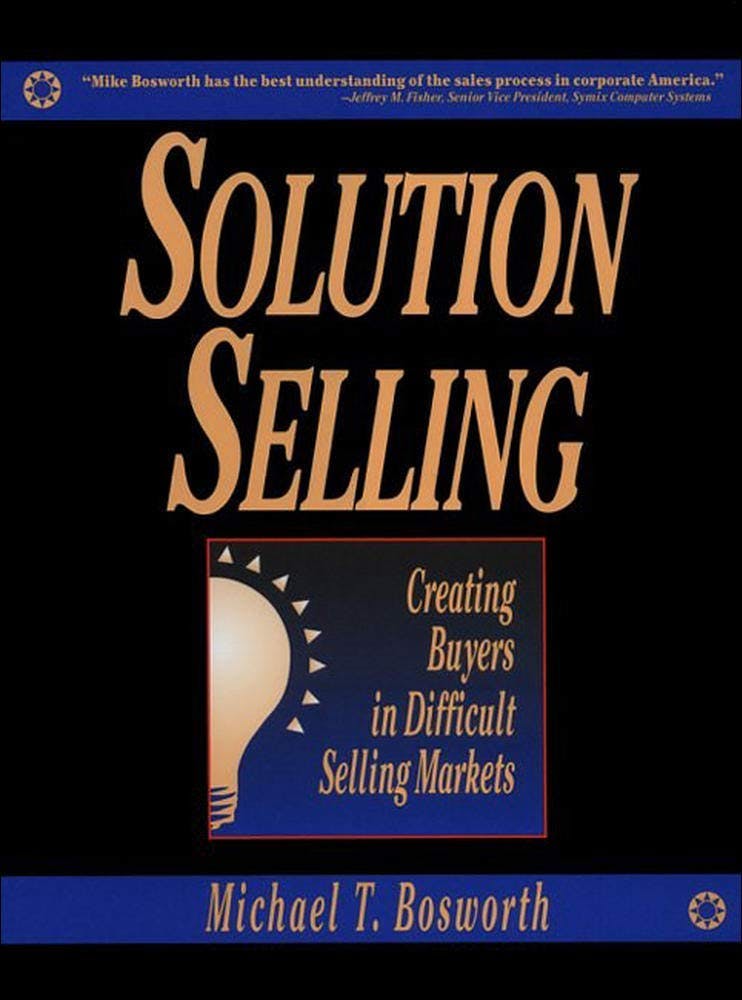
The solution selling method is particularly effective for customers with unique or very complex business problems.
It’s great for scenarios in which more traditional sales methods just don’t work because the prospect needs a bespoke bundle of specific products or services, or an otherwise high level of support.
Why Is Solution Selling Important?
Solution selling is an important strategy for sales reps to understand and practice because it’s very buyer-focused. And in today’s sales world, that counts for a lot.
Today’s B2B buyer expects a very high level of personalization throughout the sales process. 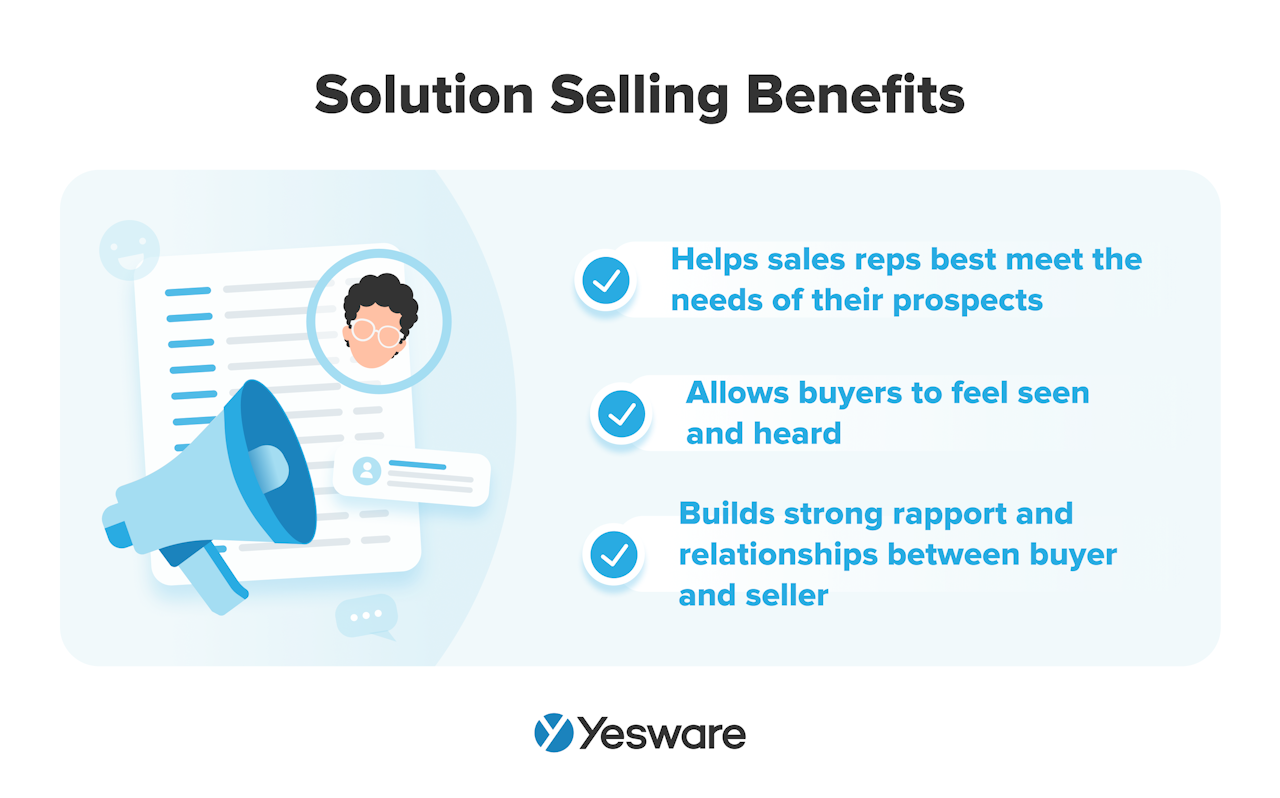 Solution selling empowers sales reps to navigate the process in a way that uncovers exactly what the prospect needs, and how to best help them meet their goals.
Solution selling empowers sales reps to navigate the process in a way that uncovers exactly what the prospect needs, and how to best help them meet their goals.
The strategy teaches sellers how to effectively build the kind of strong rapport and deep trust that helps prospects feel like the focus is on them, rather than the product or the sale.
The empathy and practicality that’s inherent to solution selling allows buyers to feel seen and heard in such a way that they can trust your solution will help them create a better future for themselves and their organization.
When is Solution Selling Used?
There are certain aspects of solution selling that can be used in a variety of sales scenarios. After all, it’s never a bad idea to demonstrate to prospects that you understand their needs and can deliver a highly targeted solution.
That being said, it’s a particularly effective sales strategy for buyers who require highly customized solutions.
In a solution selling scenario, the sales rep often has a variety of options, plans, features, etc. to offer, and will help the buyer build a suite of capabilities that will best meet their unique needs.
Solution Selling vs. Consultative Selling
Many people conflate or confuse the ideas of solution selling and consultative selling. To be fair, that’s not a bad comparison — the two have many similarities.
Both solution selling and consultative selling emphasize prospect over product. And both position the seller as the industry expert who can help the buyer determine the best solution.
In fact, solution selling is often credited for creating the “roots” of consultative selling, as well as other well-known methodologies like SPIN Selling, RAIN Selling, and Customer Centric Selling.
But there are some differences between the two. 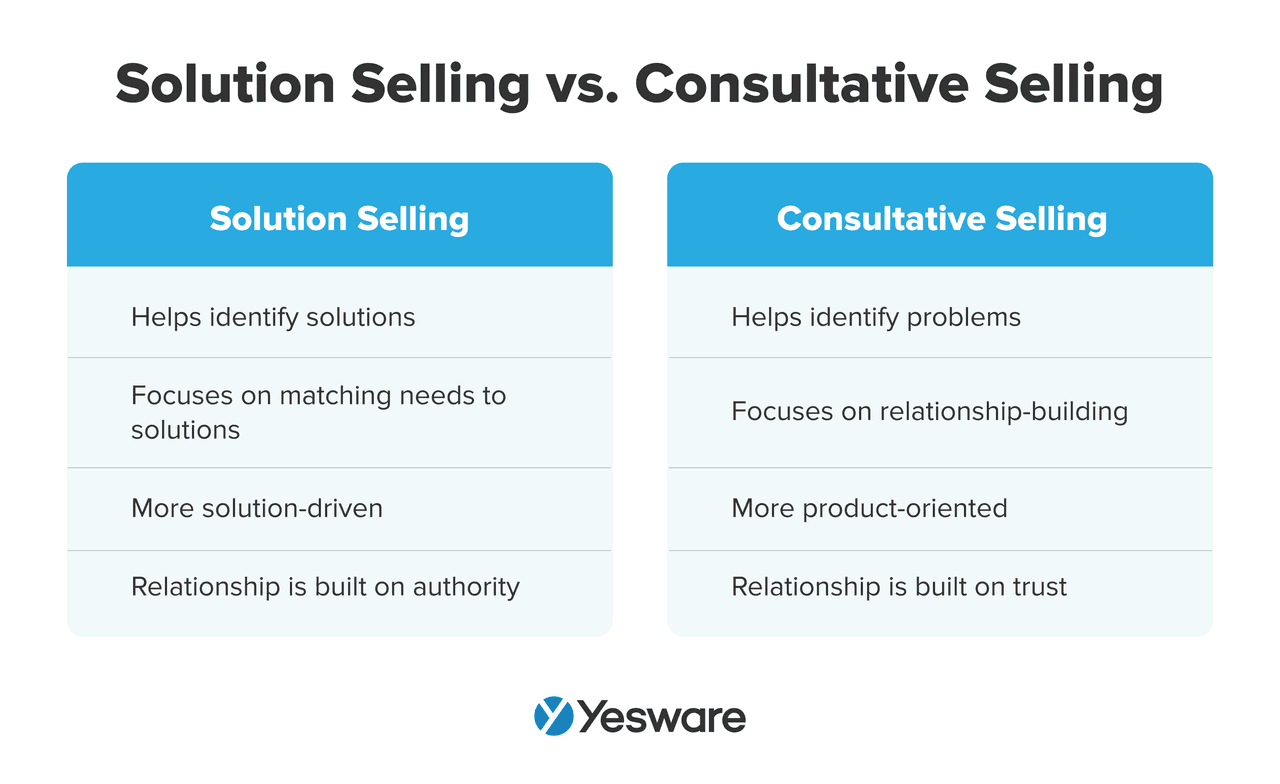 Consultative selling differs from solution selling in that it does not prioritize a solution-based outcome for the prospect. That’s not to say a consultative approach doesn’t win deals — it, too, is a very effective approach for closing deals, with the right sales rep, product, and prospect. But, at the end of the day, consultative selling emphasizes the relationship over the solution.
Consultative selling differs from solution selling in that it does not prioritize a solution-based outcome for the prospect. That’s not to say a consultative approach doesn’t win deals — it, too, is a very effective approach for closing deals, with the right sales rep, product, and prospect. But, at the end of the day, consultative selling emphasizes the relationship over the solution.
Solution selling, on the other hand, demands that reps have such an in-depth understanding of — and empathy toward — a prospect’s problem that they can craft a truly one-of-a-kind solution that will literally make the problem disappear. The emphasis is wholly on solving the prospect’s problem in as complete a manner as possible.
To be clear, it’s important to emphasize that solution selling is not really about selling a particular product or meeting a certain quota of deals — nor should sellers robotically rattle off the specs and features of their various offers in sales meetings.
Solution selling is about helping the buyer envision the bigger picture of the solution: the holistic picture of what their life will look like when their problem is solved.
Solution Selling vs. Product Selling
These two methods of selling are much more different. Solution selling and product selling are on relatively opposite ends of the sales spectrum. 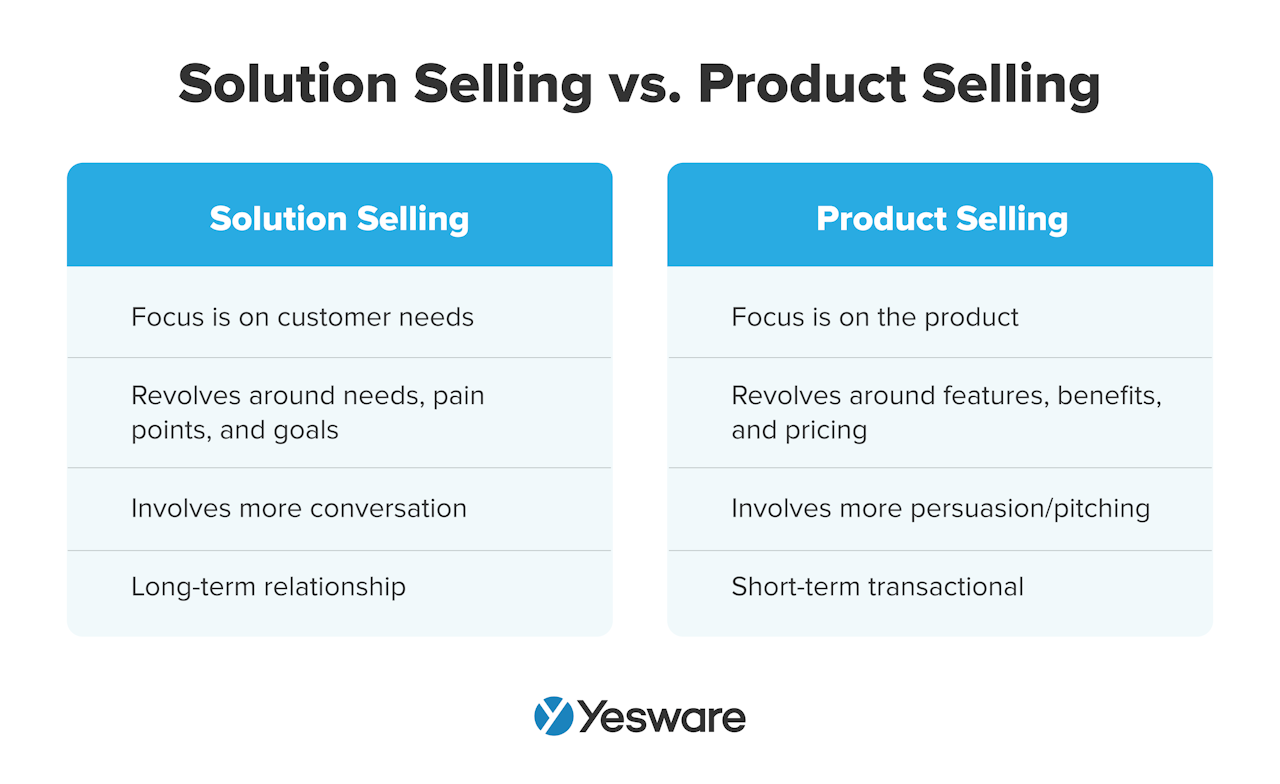 Solution selling, as we’ve discussed, centralizes around finding solutions to buyers’ problems. The bulk of the time is spent discussing and learning about the prospect’s unique needs, goals, and challenges, with the end goal of guiding them toward a complete solution.
Solution selling, as we’ve discussed, centralizes around finding solutions to buyers’ problems. The bulk of the time is spent discussing and learning about the prospect’s unique needs, goals, and challenges, with the end goal of guiding them toward a complete solution.
Product selling, on the other hand, is all about the product. This kind of sales process revolves around your product’s features and specifications and convincing prospects that yours is better than the competition’s.
Pros and Cons of Solution Selling
Just like with any sales methodology, there are pros and cons to the solution selling method.
It may not, for example, be the most effective method for prospects who know exactly what their problem is, and exactly how to find a solution.
That being said, many sales reps find that they’re able to adapt many of the basic principles of solution selling to a wide variety of sales scenarios.
Let’s take a look at some of the pros and cons of solution selling, and how to leverage them to use the approach most effectively.
Pros
One of the best things about solution selling is that it’s an approach that leads with empathy. With over 75% of buyers reporting feeling misunderstood by B2B sellers, it’s crucial that salespeople demonstrate that they are deeply in tune with and invested in the buyer’s needs. 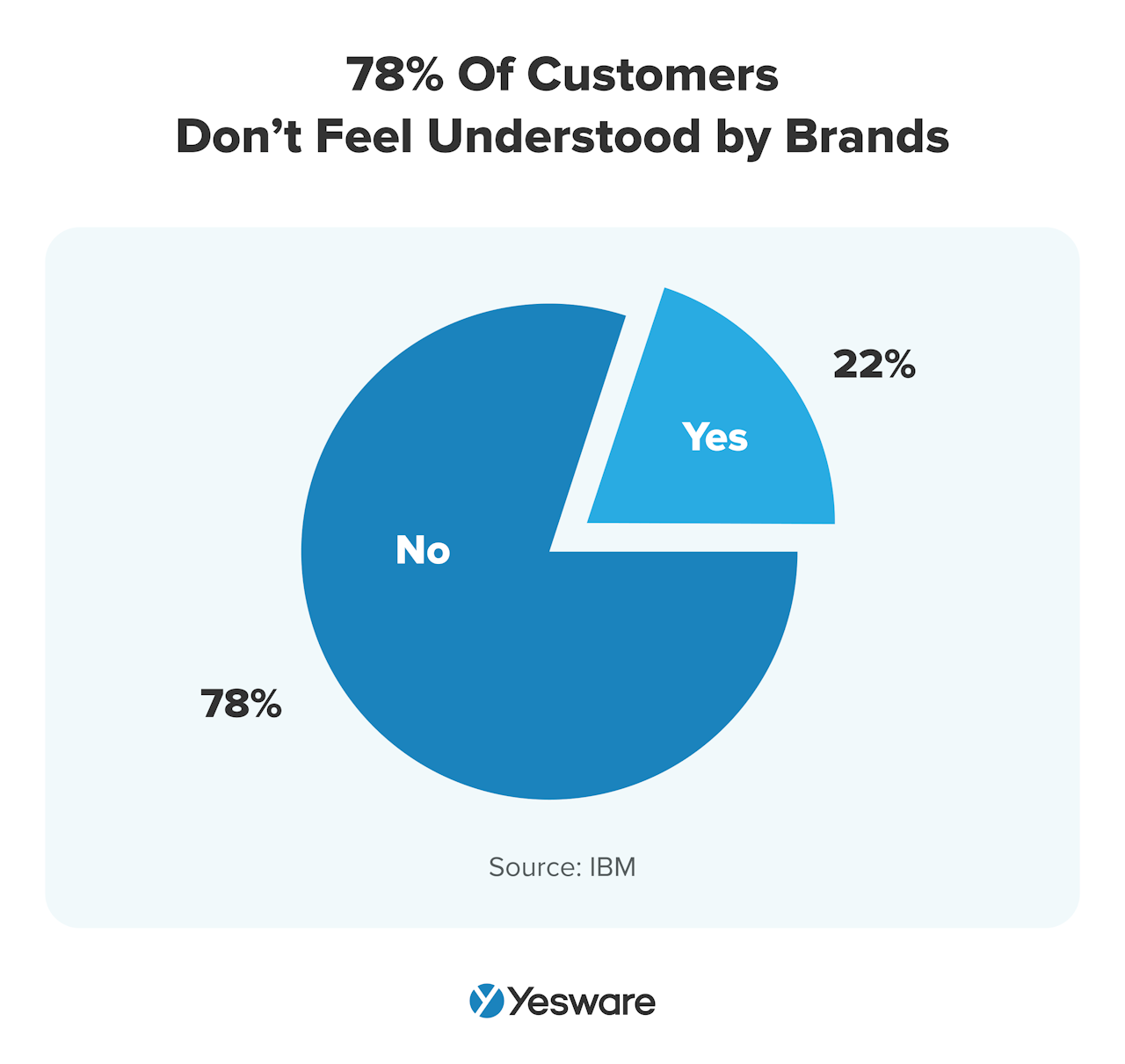 Part of what makes this method so empathetic is that it uses a tailored approach to the sales process. It’s very buyer-friendly and offers prospects a high level of support throughout the buyer’s journey.
Part of what makes this method so empathetic is that it uses a tailored approach to the sales process. It’s very buyer-friendly and offers prospects a high level of support throughout the buyer’s journey.
This makes it a great strategy to use for markets in which prospects may not even be aware yet that they have a problem.
Solution selling is all about helping the buyer solve big-picture, intrinsic company problems that will help them scale for success. With your help — your solution — their business can be transformed. This creates extremely happy customers that bring long-term value to your business through high-value contracts and referrals.
Finally, solution selling can be used by just about any sales team that’s willing to put in the time and effort. It’s a fairly structured approach, and training and experience are all that are needed to become skilled.
Cons
Although there are upsides to its structure, the solution selling method can sometimes feel a bit “rigid” for salespeople who prefer more flexibility within sales conversations. Much of the process is based on a question and answer process, which can sometimes lead to conversations that feel a bit jilted, or like they’re not flowing naturally.
It also requires more upfront prospect research than some other popular sales methodologies, which can be a turn-off for sellers who prefer a lot of face-to-face prospect interaction.
The nature of solution selling — presenting a custom solution for a very specific problem — can make it feel complex at times. Each deal is unique and requires a fresh and innovative approach, and many solutions are not simple.
Finally, some critics of solution selling argue that it’s becoming increasingly obsolete as buyers become more and more self-aware about their business problems. Part of the effectiveness of solution selling is the process of sellers helping buyers pinpoint specific issues, so some argue that the method loses its appeal without that component.
Solution Selling Process: 6 Steps
The solution selling process generally follows the same six-step framework: prospect, qualify, discover, add value, present, and close.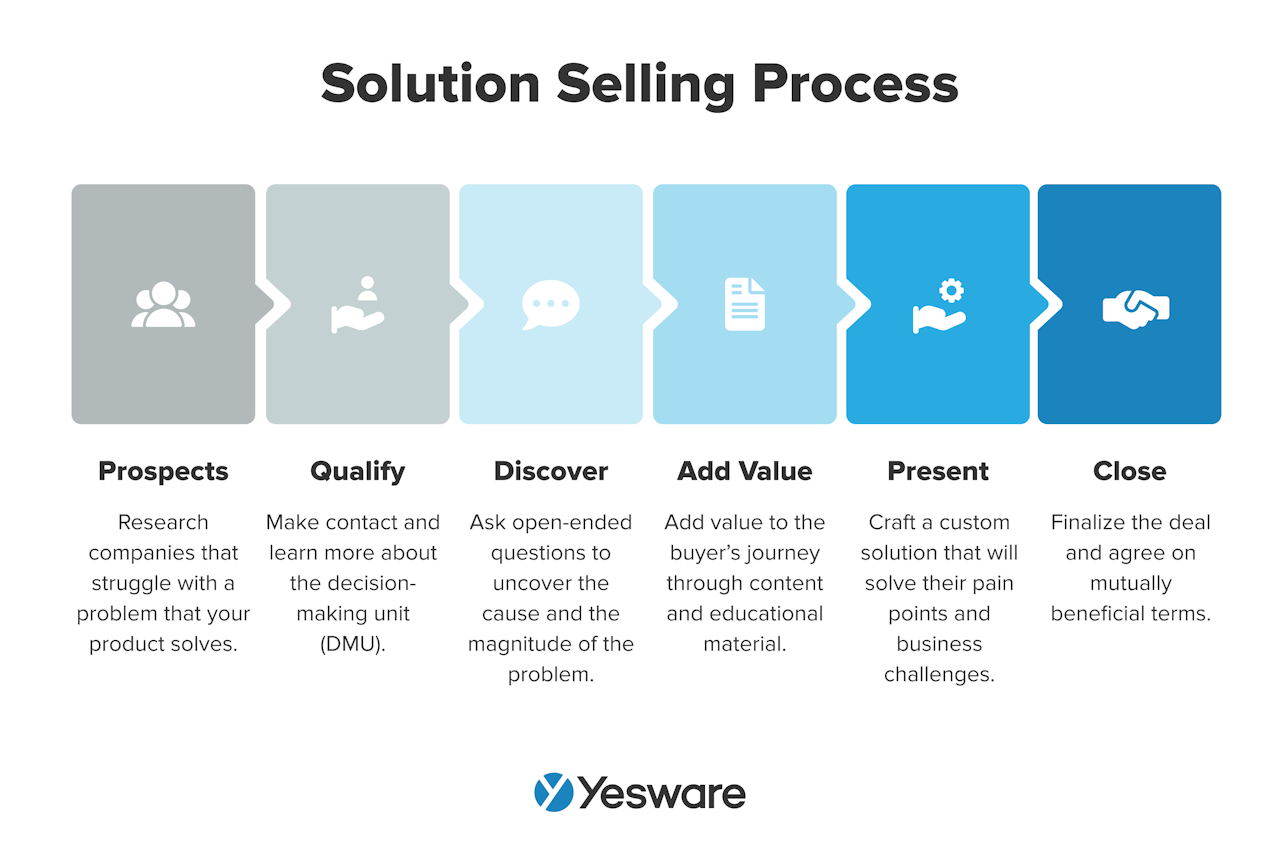
1. Prospect
The first step in solution selling is to research companies that currently (or may imminently) struggle with a problem that your product solves. Your ICP and buyer personas (more on these profiles in the next section) will help you determine which companies to target.
2. Qualify
Once you’ve identified companies that represent a good fit for your offer, it’s time to make contact and learn more about the decision-making unit (DMU). Here is where sales reps need to ask very targeted questions to learn as much as they can about the problem the prospect is facing.
3. Discover
During the discovery stage, the seller’s goal is to uncover the cause and the magnitude of the problem. Open-ended questions can help salespeople truly understand which pain points are hurting the most for the prospect and just how much of an impact they’re having on the organization.
Salespeople should practice asking targeted questions to help them get to the heart of what prospects really need during the discovery stage.
4. Add Value
After the sales rep has a thorough understanding of the buyer’s nuanced problem, it’s time to educate.
Find a way to add value to the buyer’s journey — often through content like case studies, whitepapers, or other educational material — and demonstrate how your solution will solve their problem.
5. Present
By this point, the seller should have a good sense of how much buy-in they have from the buyer. Assuming the prospect is eager to engage, the sales rep can start to craft a custom solution.
Whenever possible, try to present your offer directly to a decision-maker. Show them specifically how your solution will erase their pain points and systematically tackle their business’s challenges.
Highlight, if you can, how broad-reaching your solution will be: How many people will it affect? How many dollars will it save or generate? How much time can be gained back with your solution? Demonstrate tangible ROI.
Remember — sell a solution, not features or products.
6. Close
The last step of the process is to finalize the deal and agree on mutually beneficial terms.
Part of what makes solution selling so popular is its framework — it’s predictable and easy to follow. Just remember to be mindful of this as you practice the approach; the more natural you can make the conversation, the better.
Tip: Enhance your solution selling process with the data-backed findings below.
 Sales Engagement Data Trends from 3+ Million Sales ActivitiesLooking at millions of tracked email activity over the past few years, this ebook is filled with our top studies and findings to help sales teams accelerate results.
Sales Engagement Data Trends from 3+ Million Sales ActivitiesLooking at millions of tracked email activity over the past few years, this ebook is filled with our top studies and findings to help sales teams accelerate results.
Solution Selling Tips
Keep the following tips in mind as you practice the solution selling framework in real-world sales scenarios.
Understand Your Product
Although solution selling is decidedly not about “selling products,” it’s actually extremely important for salespeople to be head-to-toe familiar with their product or service and its features.
And although you won’t be listing these off in your sales meetings, you need to be able to quickly map the ways your product can meet the needs of the prospect so you can build a perfect solution package for them.
Along those same lines, it’s also important that sales reps are clear and up-to-date about the sales content available to them. Sales and marketing should work together to create and maintain a content library, where sellers can access many types of sales collateral that can offer value in sales conversations.
Understand Your ICP and Buyer Personas
Just like salespeople need to be extremely familiar with their own product, they also need to know all of the details and nuances of their ideal customer profile (ICP) and buyer persona.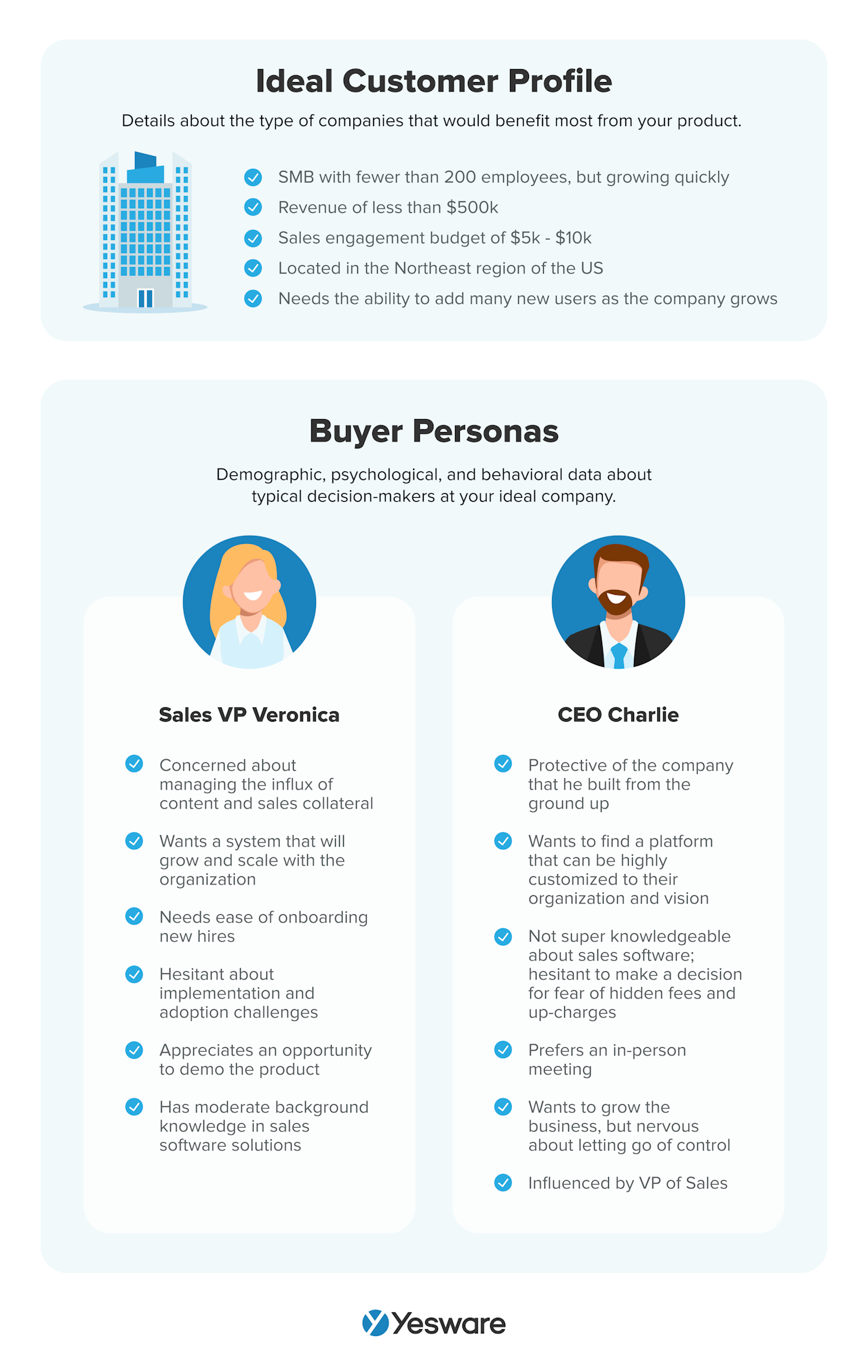 These profiles will give you a great “leg up” when it comes to getting to know your prospect and the specifics of their unique problem.
These profiles will give you a great “leg up” when it comes to getting to know your prospect and the specifics of their unique problem.
Analyze Won Deals
Take a careful look at the data behind your most successful accounts. What do they have in common when it comes to demographics, firmographics, or technographics? How were they behaviorally similar during the sales process? At what point did they buy in?
All of this information will help salespeople refine and optimize their research, qualification, and discovery skills for future leads in the pipeline.
Develop Your Questions
One of the most important components of successful solution selling is creating and asking strategic, open-ended questions effectively. 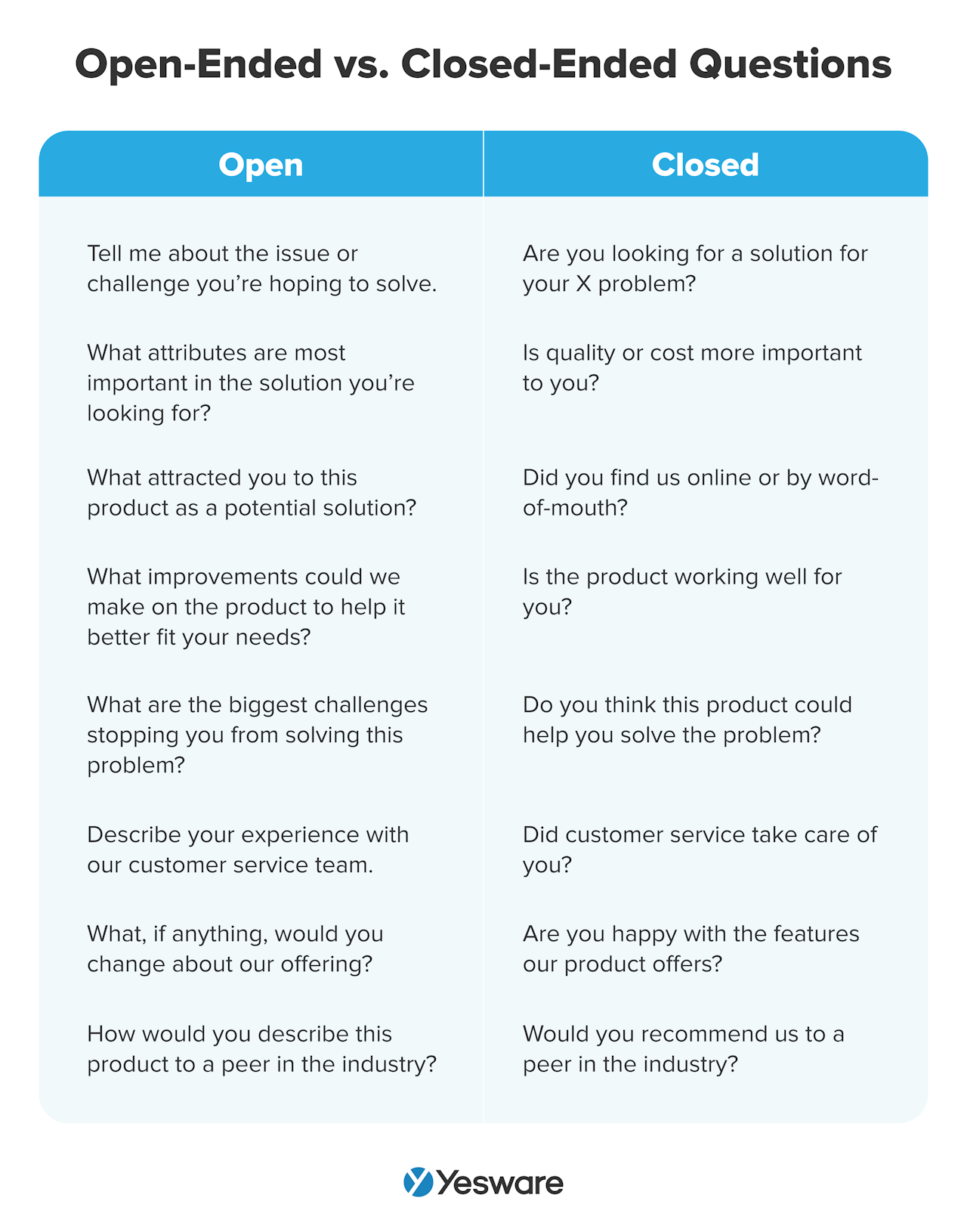 Once you have a solid big-picture understanding of their problem and concerns, you can transition to more specific questions to understand the tangible impacts.
Once you have a solid big-picture understanding of their problem and concerns, you can transition to more specific questions to understand the tangible impacts.
Practice Selling Value
Salespeople practicing solution selling need to be able to clearly communicate their products’ ROI. Data and case studies can support your claims, but you should be able to highlight how life is easier with the help of your solution.
The seller’s job is to persuade the buyer of two big things: a) that the solution can make the problem disappear forever, and b) that the buyer will see data-driven proof of that in their business metrics.
How to Get Started Solution Selling
Solution selling takes practice, but don’t let that deter you from trying it out and gaining some experience. The following simple steps will help you get started with the solution selling method.
1. Study Your Successful Deals
Start by analyzing your historical sales data. What factors or characteristics do you most successful customers have in common? Specifically, which pain points seem to have resonated most strongly among your happiest customers (before they started using your product)?
You might even consider taking this concept a step further by directly interviewing your prospects who converted to closed-won deals. Ask them what went into their decision to purchase from you, and what their results have been.
What would they say to potential future customers about their experience? How has life changed since implementing your solution?
The answers to these questions will help you hone in on what to target as you prospect and qualify leads, and how to tailor solutions to meet those specific pain points and needs.
2. Create Open-Ended Questions
Once you identify the most compelling and urgent pain points common to your target market, you can begin to develop questions that will help highlight the specific information you’ll need to design a customized solution.
The idea behind your line of questioning should be to encourage the prospect to talk about themselves, their organization, and their needs.
In other words, stay away from too much discussion about the product itself or its features.
Many sales reps find success in this kind of questioning by starting out broad and big-picture and then drilling down into the finer details (e.g., specific figures and data) later on in the process.
3. Sell Value, Not Features
At the risk of belaboring the point, solution selling is decidedly not about pitching your product and all the things it can do.
Instead, your job is to sell the prospect on how your solution as a whole will make the prospect’s life better or easier.
What tasks or challenges does your solution solve? How much time or money can it save? What could they do or buy with the time/money they save?
How will others’ perception of the prospect improve as a result of adopting your solution? Will it make them look more successful, or important?
Try to define the ROI in terms of what resonates most with the prospect. If their biggest complaint is that they’re wasting time, demonstrate the value of your offer by framing it around how much time they’ll free up by signing up. If they’re concerned about revenue slowing down, give them real data from case studies to demonstrate past bottom-line improvement.
The solution seller’s job is to paint the picture of what life could be like if the prospect’s problems were solved.
Solution Selling Questions
By nature of the approach, all solution selling sales conversations will be entirely unique. With that in mind, there isn’t one specific script or set of questions that will be guaranteed effective for a majority of prospects.
That being said, there are several framework questions that can be tweaked and adapted to the specifics of each prospect and deal. Here are a few of the most commonly used:
- Describe the problem(s) you’re facing. What would you say are its root causes?
- Are these challenges company-wide, or specific to a department or team?
- Is this an ongoing problem, or does it present at specific times?
- Can you quantify the impacts of the problem?
- How long has the problem been occurring? How or why did it get this far?
- Have you tried [possible solution]? What was the outcome?
- How has this problem impacted your workload, motivation, or focus?
- What does [decision maker] think about the problem?
- What goals do you have right now for your business? How about in the next 6 – 12 months? Would those goals be different if your problem no longer existed?
- What’s holding you back from reaching your goals?
- How would implementing [solution] affect your competitiveness in the market?
- What is forecasted to happen to your revenue numbers if you don’t solve the problem?
All of these are great starting points for diagnosing a prospect’s problem, qualifying them for a solution, and adding value to their deliberation throughout the sales process.
More Resources: Top Solution Selling Books
Because solution selling has been around for so long, there is ample research and resources available on the methodology.
Solution Selling: Creating Buyers in Difficult Selling Markets was written by Michael Bosworth, largely considered one of the two most influential people in modeling this approach.
Solution Selling was written in 1995, but is still popular and highly regarded today. It’s extremely comprehensive and considered by salespeople to be an excellent roadmap for how to approach untraditional sales.
The New Solution Selling
Keith M. Eades’s The New Solution Selling is considered by many to be the unofficial sequel to Bosworth’s book, and presents a more streamlined idea about how to execute solution selling.
Many sellers also appreciate this text because it comes with an accompanying workbook.
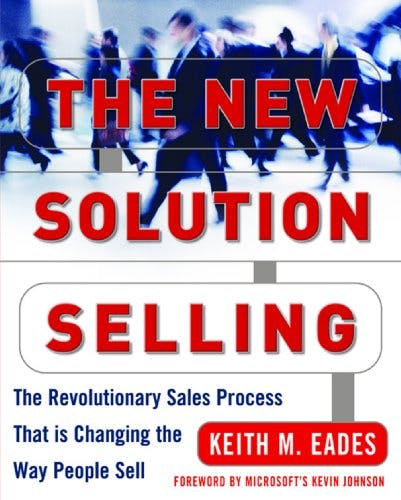
Solution Selling: The Strongman Process
Solution Selling: The Strongman Process by Ed Wal is the newest text on the subject, published in 2016. It’s a no-nonsense guide to solution selling.
His approach is extremely process-based and will work well for salespeople who appreciate a prescribed approach. The book also includes exercises and tips for real-world application.
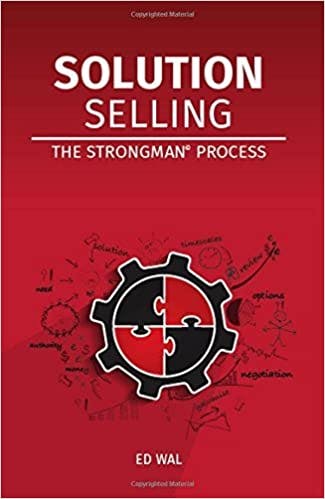
This guide was updated on September 20, 2023.
Get sales tips and strategies delivered straight to your inbox.
Yesware will help you generate more sales right from your inbox. Try our Outlook add-on or Gmail Chrome extension for free, forever!
Related Articles
Casey O'Connor
Anya Vitko
Melissa Williams
Sales, deal management, and communication tips for your inbox

